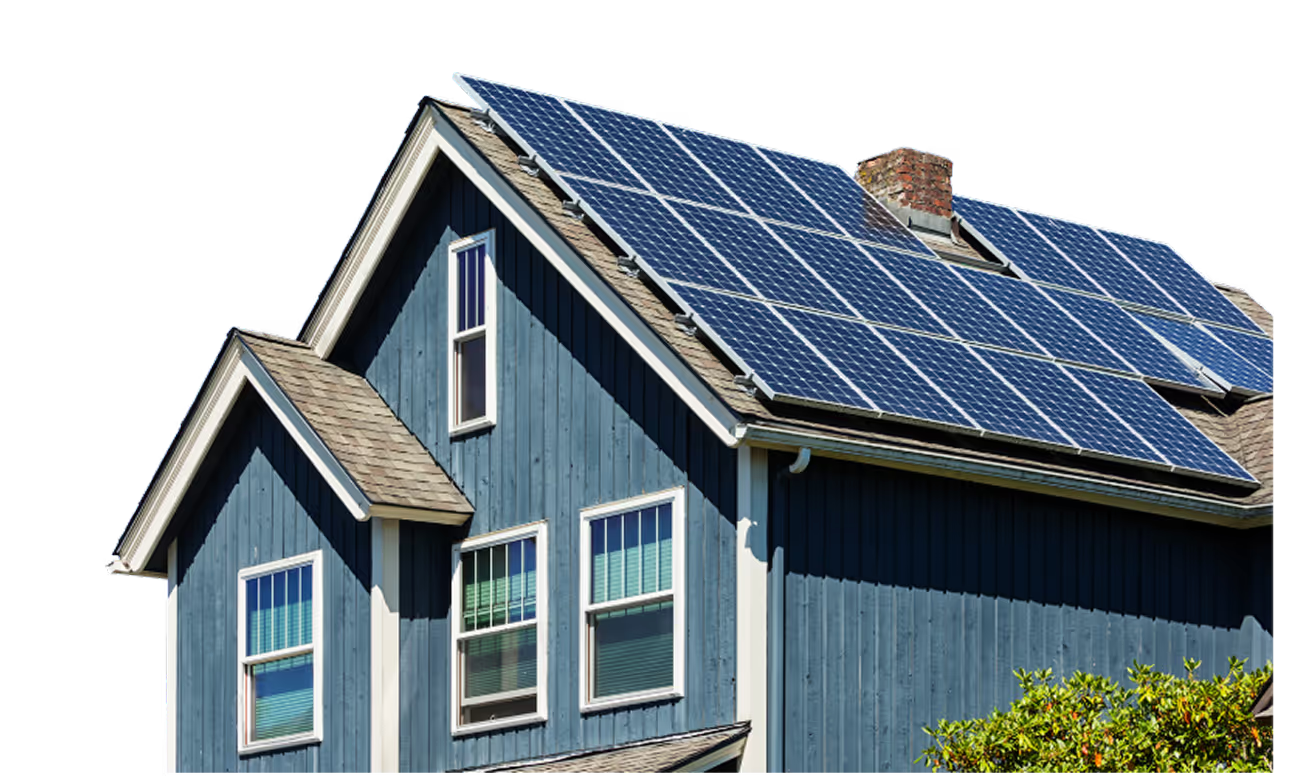
Solar panels have been gaining significant traction in sunny Malaysia, and for all the right reasons. With the abundance of sunlight, homeowners and businesses alike are increasingly turning to solar panels to reduce electricity bills and contribute to a greener planet.
This step-by-step article will cover all the information you need from choosing the right solar panels, to understanding the post-installation processes, including its financial benefits.
WATCH: How To Install Solar Panels
Witness firsthand how renewable energy solutions are implemented with our comprehensive guide in the step-by-step solar panel installation process video below!
As we gear up to launch in Malaysia, we’ve prepared an installation video for your casual viewing. While it’s set in the context of Singapore, rest assured that the practices and standards demonstrated are interchangeable with our operations in Malaysia.
Hang on!
Before we dive deeper, let’s get acquainted.
Be apart of the GetSolar community today! Give our interactive solar calculator a go! It’s free!
Get Your Free Solar Estimate
Step 1: Finding Solar Panel Installers In Malaysia
1. Research And Compile A List Of Installers
Looking for solar installers can be daunting with the abundance of options. A good starting point is checking the Sustainable Energy Development Authority (SEDA) of Malaysia’s list. SEDA ensures installers are up to standard in terms of quality and safety.
Otherwise, we’ve put together a list of top solar installers in Malaysia for you. This guide keeps things simple and easy to understand, steering clear of unnecessary information.
2. Assessing Installer Credentials: Track Record And Certifications
Ensure your chosen installer has certifications from SEDA or the Energy Commission of Malaysia. This guarantees they possess the necessary technical expertise.
Typically, companies will showcase their past projects and customer testimonials on their website. Although these are cherry picked for their website, it gives a good gauge on how credible the company is. Social media accounts, and Google reviews are also ways to source for project reviews.
3. Quality Checks And Tailored Solutions
When selecting a company, prioritize one that customizes its price plans and solutions to fit your specific needs, such as electricity consumption, roof space, and budget.
Additionally, make sure to inquire about the products being used, especially the solar panels and inverters. Reputable suppliers will use high-quality, tier-one solar products to ensure reliability and performance.
To assist in your search, we’ve included an image that ranks the most powerful solar panels as of January 2024.

4. After-Sales Support
After-sales support is an important yet often overlooked aspect when it comes to finding solar panel installers.
Ensure you inquire about maintenance and warranty details to keep your system running smoothly throughout its lifespan. This ensures that the company will remain responsive to your needs beyond the installation phase.
5. Request Quotes And Compare
After you’ve obtained multiple quotes from various suppliers, start comparing them to see which one suits your needs best. However, remember to not base your decision on price alone, consider the overall benefits offered by each installer. This ensures you’re getting the most out of your solar panels.
Step 2: Choosing The Right Solar Panel
Monocrystalline Solar Panels: The Premium Choice
Monocrystalline Solar Panels stand out for their efficiency and longevity. Made from single-crystal silicon, these panels excel at transforming sunlight into electricity more effectively.
This makes them the superior choice for homes in tropical regions, where there’s an abundance of sunlight, which can be fully used to boost energy production.

How Many Kilowatts (KW) Do I Need?
Determining the right kilowatt (kW) capacity for your solar system is based on 2 key factors, your household’s energy usage and the space available on your roof for solar panels. By fully utilizing your roof’s potential to accommodate an appropriately sized kW system, you can significantly boost your savings. Additionally, selecting high quality panels ensures that sunlight is being efficiently converted into electricity.

Concerned About High Upfront Cost For Solar Panels?
We are currently the only company in Singapore that installs solar panels for zero upfront cost(more commonly known as Rent-To-Own Solar Subscription, or RTO).
What that means is that you’ll be able to pay off your system in monthly installments, while enjoying instant monthly savings & minimum energy guarantees! 🤑
While we are currently not operating in Malaysia yet, you can still join our waitlist & you’ll be first to be informed of our zero upfront cost solar plans!
Step 3: Site Assessment
A professional site assessment is the next step. Professionals will evaluate the best installation spots on your property, taking into account factors like roof condition, shading, and orientation, to maximize energy generation.
You can read more about how these conditions affect your solar panel outputs here.
Step 4: Solar System Installation Process
1. Safety Measures And Pre-Installation Checks
On the scheduled installation date, safety measures such as barricades and warning signs will be set up to ensure a safe and secure work environment. Scaffolding might be introduced for hard-to-reach roofs as well.
Afterward, the key initial procedure involves inspecting the roof’s structural integrity. This essential measure ensures that the roof can bear the weight of the solar panels. Should any issues arise during this detailed inspection, necessary repairs or reinforcements will be promptly addressed before proceeding with the solar panel installation.
2. Solar Panel Installation
With the initial checks out of the way, the team proceeds with the installation of the racking system, which serves as the sturdy foundation for solar panels.
The installation method varies on the different roof types. For example, tiled roofs are temporarily removed, while metal roofs need a clamp-on approach without penetration. Waterproofing may also be recommended to safeguard against potential leakages.
Find out more on the suitability of roof types here!
3. Wiring & Inverter Setup
Following the solar panel installation, the next step is wiring the system together and setting up the inverter, which is important in converting solar energy into electricity. Typically, solar inverters would be placed indoors to ensure a stable Wi-Fi connection and optimal performance.
4. Inspection And Testing
The final stage involves a thorough inspection and electrical testing by licensed professionals. This ensures the system adheres to all safety, quality standards, and functions as expected, providing you with efficient, renewable energy.
Step 5: Post-Installation Process
After installation, your solar PV system will undergo a thorough inspection by our professional team. This may involve local authorities or TNB to ensure compliance with all safety and operational standards.
Types Of Financial Incentives For Solar In Malaysia
How Is The Government Supporting Solar Energy Adoption?
Malaysia’s commitment to a greener future is evident through its National Energy Transition Roadmap (NETR), setting targets for renewable energy usage: 31% by 2025, escalating to 40% by 2035, and aiming for 70% by 2050. This plan highlights the country’s efforts to reduce greenhouse gas emissions.
The Net Energy Metering (NEM) 3.0 program presents attractive incentives. With an extension of 100MW to the NEM Rakyat and an increase of 300MW to NEM Nova, due to the high uptake of the previous quotas, the program encourages more residential and commercial entities to adopt solar energy, further pushing the nation towards its renewable energy goals.
Interested readers can check the current quota balance here.

Act fast and apply now! Quotas are filling up quickly.

More information can be found here:
Green Investment Tax Allowance & Green Income Tax Exemption
How Much Can I Save From Selling Excess Electricity?
Here’s a breakdown for a domestic tariff, 2-storey house with three-phase connection. Estimated energy consumption of 920kWh, solar system capacity of 8.50kWp, with an estimated upfront purchase of RM34,000.
Estimated Monthly Electricity Bill After Tax

With the help of Tenaga Nasional Berhad’s Calculator, we can see that a household consuming 920 kWh will not be eligible for the ICPT rebate. Therefore, with the 8% service tax, the estimated total bill will be RM 421.04.

The NEM Calculator by SEDA shows that a 8.50kWp solar system, with an estimated upfront cost of RM34,000, can drastically slash your monthly electricity bill by over 97%!
An approximate time of 6.9 years to breakeven from the solar system might initially seem lengthy, however it’s important to consider its strong benefits — a significantly lower electricity bill, making solar a great financial investment. Moreover, you’ll be investing in a greener future, substantially aiding the climate.
How Do I GetSolar In Malaysia?
As we wrap up our comprehensive article to solar panel installation in Malaysia, featuring a step-by-step walkthrough, and a detailed cost and savings breakdown, the journey to a sustainable lifestyle becomes increasingly clear.
With this vision in mind, we invite you to join this solar revolution by filling up the waitlist form at the top of this article. And when we arrive in sunny Malaysia, we’ll know how to contact you! The future is bright with solar energy — let’s embrace it together.
Here’s to a brighter, greener future for all.

Rent-to-Own Solar for Business with Guaranteed Performance
Immediate ROI




Rent-to-Own Solar. $0 Upfront cost. Guaranteed Savings
(10-Year RTO plan)
+ 10-Year Free Maintenance






.avif)



